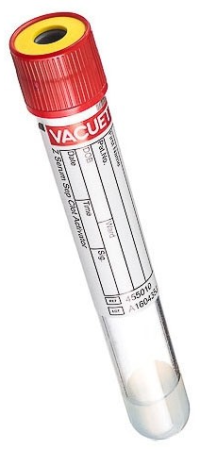
Test Code: 6447
CPT Code(s): 86695, 86696
Methodology: Immunoassay (IA)
Clinical Significance: Herpes Simplex Virus (HSV) is responsible for several clinically significant human viral diseases, with severity ranging from inapparent to fatal. Clinical manifestations include genital tract infections, neonatal herpes, meningoencephalitis, keratoconjunctivitis, and gingivostomatitis. There are two HSV serotypes that are closely related antigenically. HSV type 2 is more commonly associated with genital tract and neonatal infections, while HSV type 1 is more commonly associated with infections of non-genital sites. Specific typing is not usually required for diagnosis or treatment. The mean time to seroconversion using the type specific assay is 25 days. The performance of this assay has not been established for use in a pediatric population, for neonatal screening, or for testing of immunocompromised patients
Limitations: Individuals infected with HSV may not exhibit detectable IgG antibody in the early stages of infection.
Alternative Name(s): Not applicable
Supply: #T157 Red/Yellow SST 8mL
Preferred Specimen: Serum
Preferred Volume: 1mL
Transport Container: Serum Separator Tube (SST)
Transport Temperature: Room Temperature
Specimen Stability: Room Temperature: 7 Days
Rejection Criteria:
- Gross lipemia
- Hemolysis
- What are hemolyzed specimens?
- Hemolysis occurs when the red cells are damaged during sample collection causing them to rupture. Hemolyzed serum or plasma is pale pink to red rather than the normal clear straw or pale-yellow color.
- What causes a specimen to be hemolyzed?
- Mixing tubes too vigorously
- Placing tubes in the refrigerator without allowing 30 minutes at room temperature for complete clotting
- Exposure to heat or in a refrigerator that is too cold
- Using a needle with too small of a bore necessary for the venipuncture
- Using too large a tube when using a butterfly needle
- Not allowing sufficient time for alcohol to dry on puncture site
- Leaving the tourniquet on for longer than one minute
- How can hemolyzed specimens be prevented?
- For routine collections, use a 20–22-gauge needle
- Do not remove the needle from the vein with the vacuum tube engaged
- Do not collect a specimen in a hematoma
- Do not centrifuge the specimen for a prolonged period of time
- Draw the sample gently and evenly
- What are hemolyzed specimens?
- Plasma
- Specimens exceeding stability
- Specimens other than serum
- Unlabeled or improperly labeled specimens
For additional supply or collection device information, please contact DLO's Customer Service at (800) 891-2917, option 2.
The CPT codes provided are based on AMA guidelines and are for informational purposes only. CPT coding is the sole responsibility of the billing party. Please direct any questions regarding coding to the Payor being billed.
